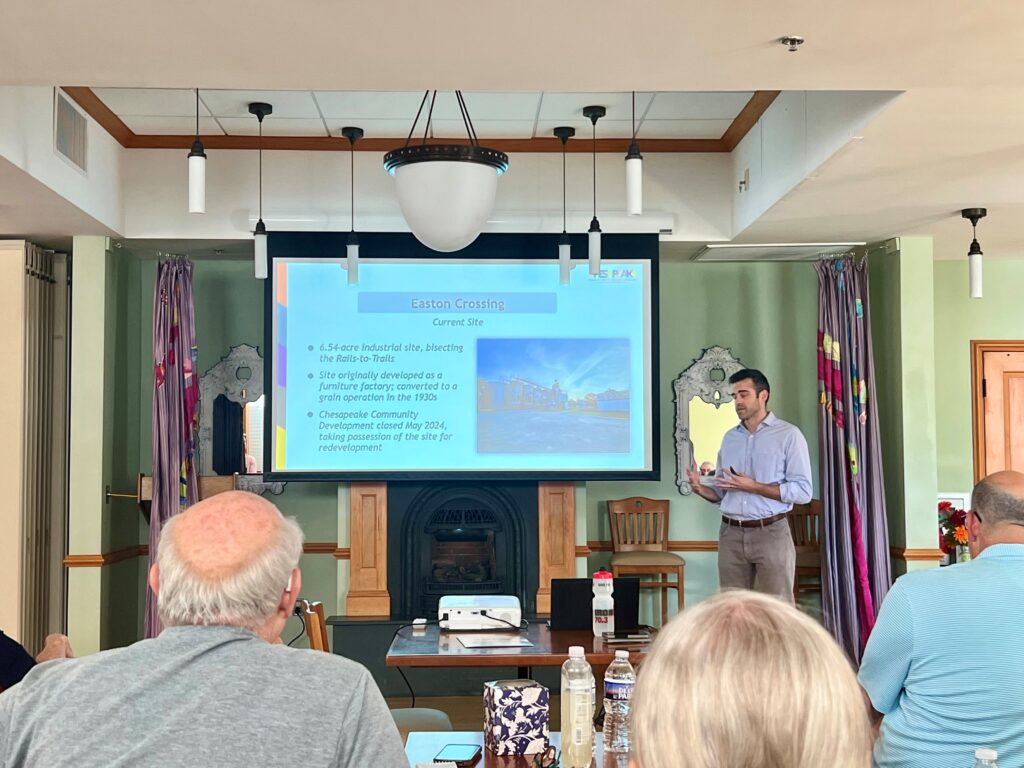Chesapeake Community Development hosted a highly productive listening session on July 10 with the Easton community to gather valuable feedback from residents about the proposed development, Easton Crossing. The session highlighted the community’s priorities and concerns, providing essential insights to guide the project’s direction.
“We are grateful to the community for sharing their priorities and concerns,” said Ross Benincasa, Vice President of Community Development at Chesapeake Community Development. “We learned a lot of important information about the vision the community has for the East End and Easton as a whole.”



Easton Crossing, located at the former Perdue grain facility on Brookletts Avenue, will feature a mix of housing, retail, and recreation spaces. During the listening session, community members were split into groups and asked five key questions to delve deeper into their expectations and concerns for the project.
Key Findings from the Listening Session
There were many unique and creative points, but also many common themes throughout the feedback, including how Chesapeake Community Development plans to balance commercial and residential opportunities and create a diverse and inclusive space that increases the quality of life for the community. Key findings from the sessions included:
1. Diverse and Inclusive Community: Residents expressed a strong desire for a diverse and inclusive community, emphasizing the importance of affordability and accessibility. There is a clear preference for a mix of demographics, including seniors, families, and the workforce, integrated within the development.
2. Quality of Life and Amenities: Quality of life is a top priority for the community. Participants highlighted the need for green spaces, native landscaping, and safety measures such as security cameras and adequate lighting. Additionally, there is a high demand for accessible amenities like parks, playgrounds, and community gathering spaces to enhance the living experience.
3. Balanced Residential and Commercial Development: The feedback underscored the necessity for a balanced mix of residential and commercial spaces. Residents want affordable and market-rate housing options alongside commercial offerings that prioritize local businesses and essential services, steering clear of generic establishments.
4. Sustainability and Design Aesthetics: Environmental sustainability and design aesthetics were prominent concerns. Community members called for effective stormwater management, green energy solutions, and architectural designs that align with Easton’s existing style. They also stressed the importance of buildings reflecting local heritage and maintaining aesthetic appeal.
5. Community Engagement and Transparency: Ongoing community engagement and transparent decision-making processes are critical to the success of Easton Crossing. Residents expect proactive management of potential challenges, including traffic, parking, and noise, and demand continuous involvement throughout the project’s lifecycle.



“We are very eager to engage with the local community to hear their needs first-hand,” said Jonathon Rondeau, President & CEO of The Arc Central Chesapeake Region. “Much of what the community identified as priorities are also priorities for Chesapeake Community Development. We appreciate their honest feedback will be critical as we move forward with the next stages of development.”
These insights will play a crucial role in shaping Easton Crossing into a well-thought-out, inclusive community that meets the needs and expectations of its residents. The next steps will involve incorporating this feedback into the planning and design phases to ensure the community’s vision is realized. An additional listening session is planned for September 18, at 5:30pm, at Asbury United Methodist Church, 18 S Higgins Street. Residents and community members are strongly encouraged to attend to provide additional feedback and insights for this stage of the project.

